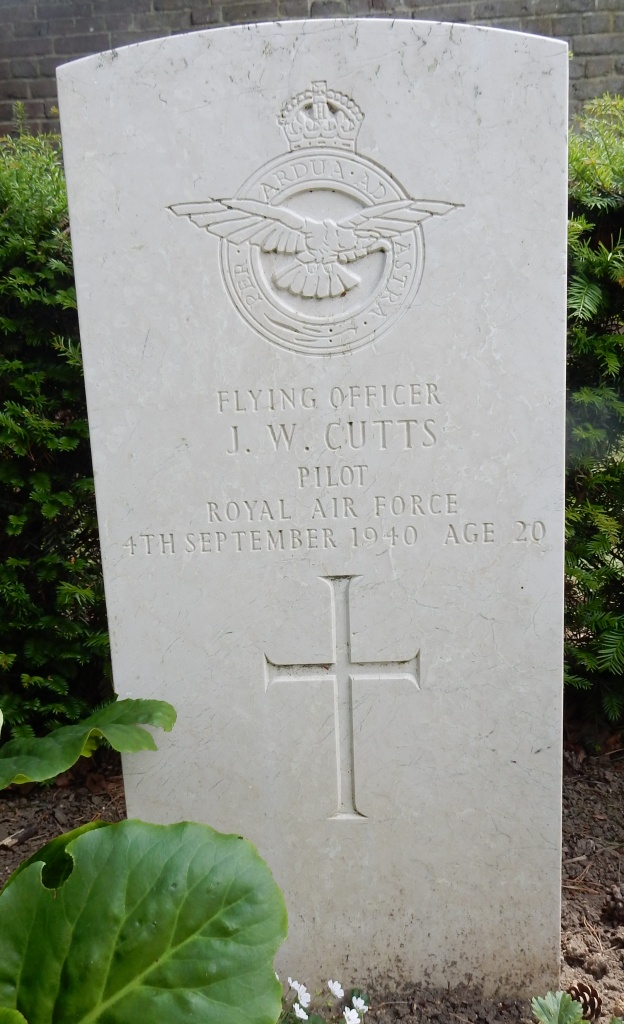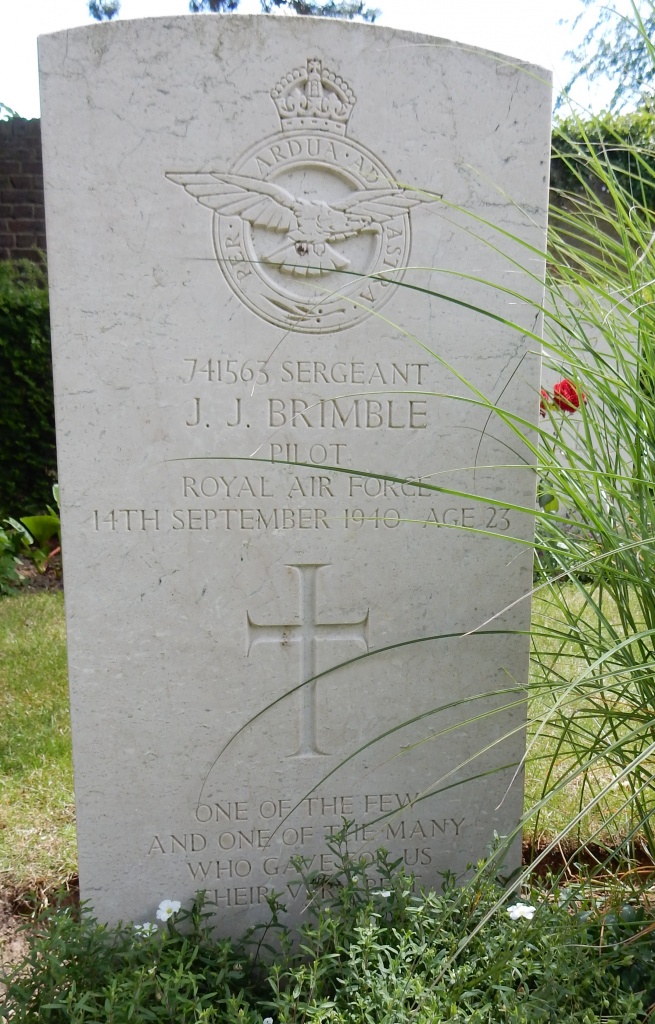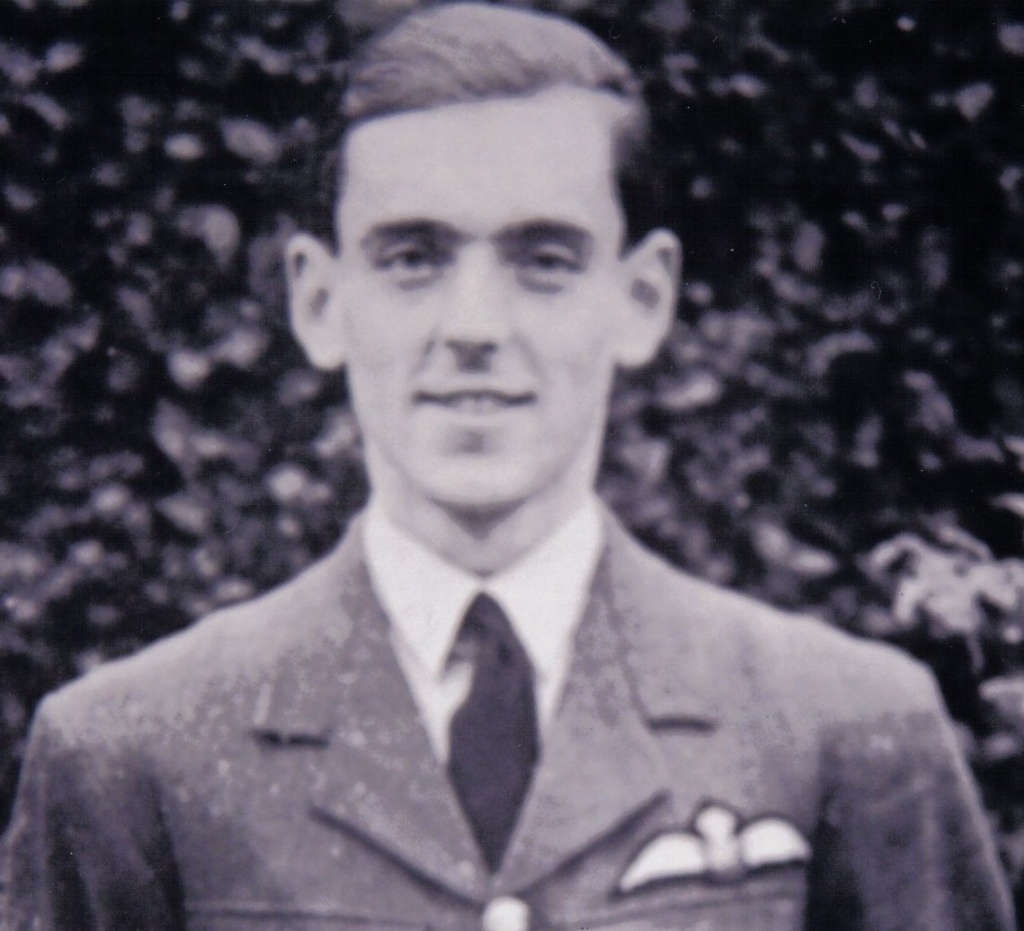
There are no sadder stories than of those reported simply ‘missing’, their families denied closure – but at least the cases of Pilot Officer John Wintringham Cutts, a twenty-year-old Spitfire pilot of 222 Squadron, and Sergeant John Brimble, a twenty-three-year old Hurricane pilot of 73 Squadron, were resolved through the research and efforts of my friends and I back in 1998
John Cutts had flown with 222 Squadron at Hornchurch since June 1940, and recorded several combat successes. At lunchtime of 4 September 1940, seventy He 111s and Do 17s, escorted by a staggering 200 Me 109s crossed the Kent coast. Nine 11 Group fighter squadrons engaged the raiders, including 222. Over West Malling, however, the ever watchful 109s pounced, killing Sergeant Ramshaw and blowing Pilot Officer Carpenter, who miraculously survived, out of his cockpit. Pilot Officer Cutts, however, failed to return. Significantly, 49 Maintenance Unit, one of the units clearing crash-sites, reported that Spitfire X4278 – flown by Flying Officer Cutts – had crashed at Chart Sutton, Kent, and that the recovery was ‘in hand’. According to Kent County Council’s War Diary, the pilot of that aircraft had baled out. Nothing more, however, was heard, so Flying Officer Cutts remained ‘Missing in Action’.

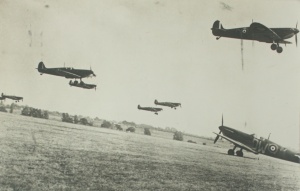
On 14 September 1940, the Luftwaffe again attacked London, and a confused fight developed over south-east England. It proved a disastrous day for Debden-based 73 Squadron, the Operations Record Book of which describes events providing a fascinating insight into the difficulties of air fighting: –
‘A glorious morning with the Squadron at 15 minutes availability until 1300 hrs. At 1530 hrs they were still at readiness when ordered to scramble North Weald Angels 15 in company with 17 Squadron. Only six Hurricanes returned during the afternoon, and those singly. F/O Smith returned first and reported having seen a Hurricane shot down by a Spitfire South of Tilbury. Sergeants Plenderleith, Webster and Garton (Green Section) reported that their formation had been attacked and broken up by a section of Spitfires diving on them at 16,000 feet near Tilbury. P/O Scott and P/O Marchand were the only others to return, the latter having a bullet through his port main tank, another through the port aileron and main spar, and another clean through the top of the W/T mast. None had fired their guns as no E/A had been within range. F/L Breytagh forced-landed uninjured at West Malling with a bullet in the radiator. Sgt Marshall was shot down by an Me 109 and forced-landed at AM Experimental Station Dover, uninjured, from where he returned next morning. Sgt Leng was shot down near Gravesend and despite a very badly damaged aircraft landed safely at the aerodrome. S/L Robinson was shot down near Tonbridge and taken to the Kent & Sussex Hospital with a minor injury to his right eye and superficial wounds in left wrist and left leg. Sgt Griffon has been taken to the West Kent Hospital at Maidstone with a dislocated shoulder and minor injuries to both legs. Both the CO and Sgt Griffin had to bale out. Sgt Brimble is missing’.
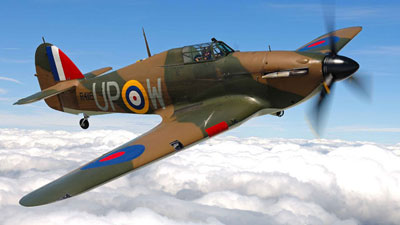
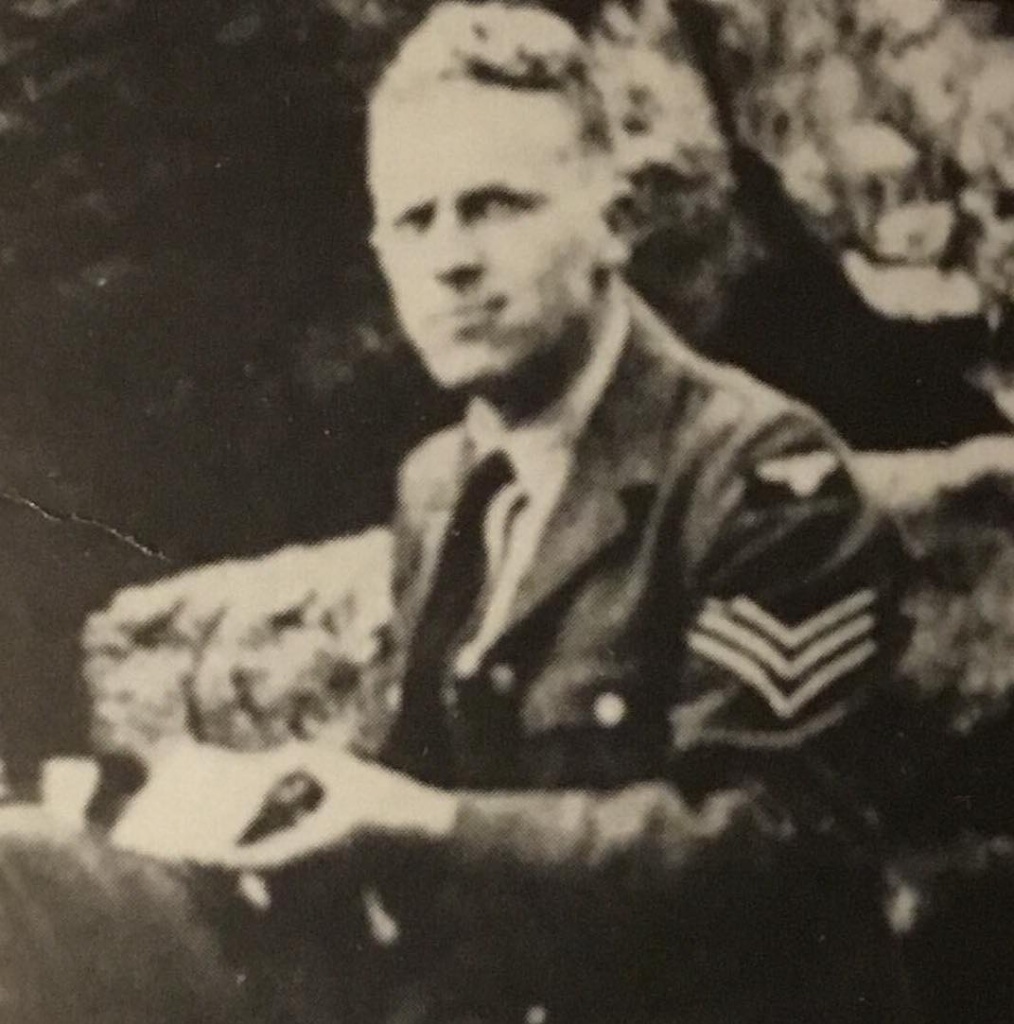
Like Flying Officer Cutts, no news was received of the Bristolian John Brimble. On the day in question, though, a Hurricane crashed at Park House Farm, Chart Sutton, from which a quantity of human remains was recovered. A fortnight later, those remains were buried as ‘Known unto God’ at Bell Road Cemetery, Sittingbourne, Kent, along with the similarly unidentified remains of another RAF fighter pilot. Regarding the latter, according to the Burial Register, these remains were found at ‘Amberley Farm, Loose’. There is no such place. In 1980, aviation archaeology enthusiasts excavated the Chart Sutton Hurricane site – recovering human remains identified as being Sergeant John Brimble. Rightly, the long-lost twenty-three-year-old pilot was given a military funeral and buried under a named headstone at Brookwood.
But who were the unknown airmen at Bell Road?
Cutting a long story and investigation short, over twenty years ago, whilst researching ‘Missing in Action: Resting in Peace?’, a chronicle of the recovery of missing Battle of Britain airmen and a detailed explanation regarding the current and legal situation, I began investigating these burials. Given the recovery and identification of Sergeant Brimble from the Chart Sutton site, there was no doubt whatsoever that the unidentified remains in grave W49 at Bell Road also belonged to that pilot. It was also circumstantially obvious that the unknown pilot in W143 were those of Flying Officer Cutts, removed not from ‘Amberley Farm, Loose’ but actually Amberfield Farm, Chart Sutton. But how to conclusively prove this, especially as the aircraft another missing pilot, Pilot Officer Robert Shaw of 1 Squadron, was also known to have crashed at Chart Sutton?
Andy Saunders and I discussed the case at length, leading to him checking files and providing a piece of the jig-saw that proved the case beyond all reasonable doubt: a letter from Squadron Leader Goodman of 49 MU to the civilian contractor AV Nicholls, confirming that Spitfire X4278 had indeed crashed at Amberfield Farm – and that Pilot Officer Shaw’s Hurricane P7382 was down at Park House Farm. The Death Certificate was also produced for the W143 burial, again stating ‘Amberley Farm, Loose’ as being the place of death. However, although no such farm exists, Amberfield Farm is within the Loose Rural District and parish. Clearly, then, an administrative error in 1940 had led to Flying Officer Cutts never being identified – denying his family closure.
Armed with a sheaf of papers and having investigated all surrounding crash sites, there then followed an exasperating and protracted period of correspondence with the Ministry of Defence, namely the Casualty Section at the RAF Personnel Management Centre. Inertia, however, prompted me to write to the Prime Minister on 11 November 1997 – which rather got things moving. Again, cutting a very long story short, this led to a meeting with the departmental head, who presented with all the evidence, sensibly agreed that yes, a mistake had been made and that the remains were indeed Flying Officer Cutts and Sergeant Brimble. This was a victory indeed, made possible through serious investigative work (I was a police detective at the time) and collaborative working between those of us deeply moved by the whole issue surrounding the missing.
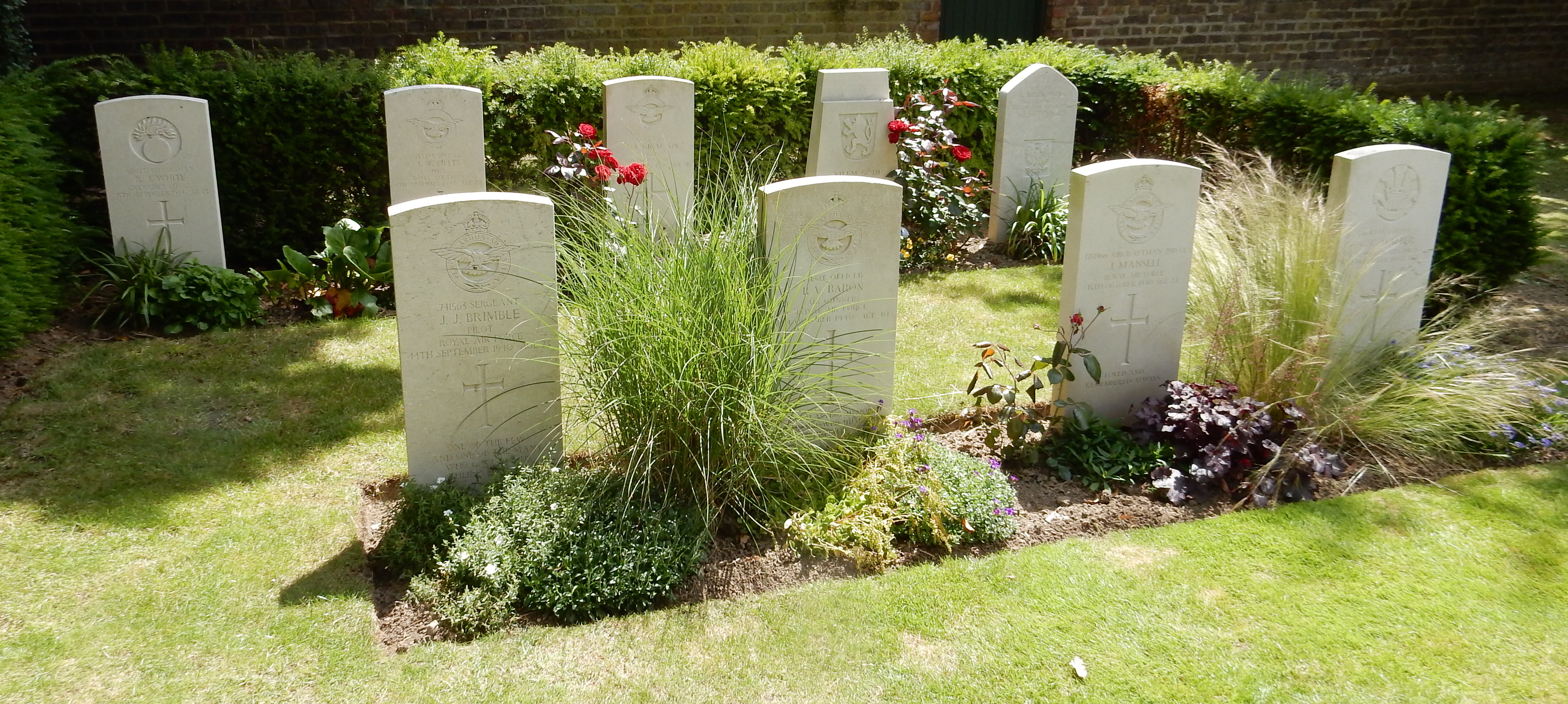
Eventually, both graves were named accordingly – Sergeant Brimble now having both a grave at Brookwood and the original one at Sittingbourne.
So it was that fifty-eight years after Flying Officer John Cutts disappeared – he was found at last.
